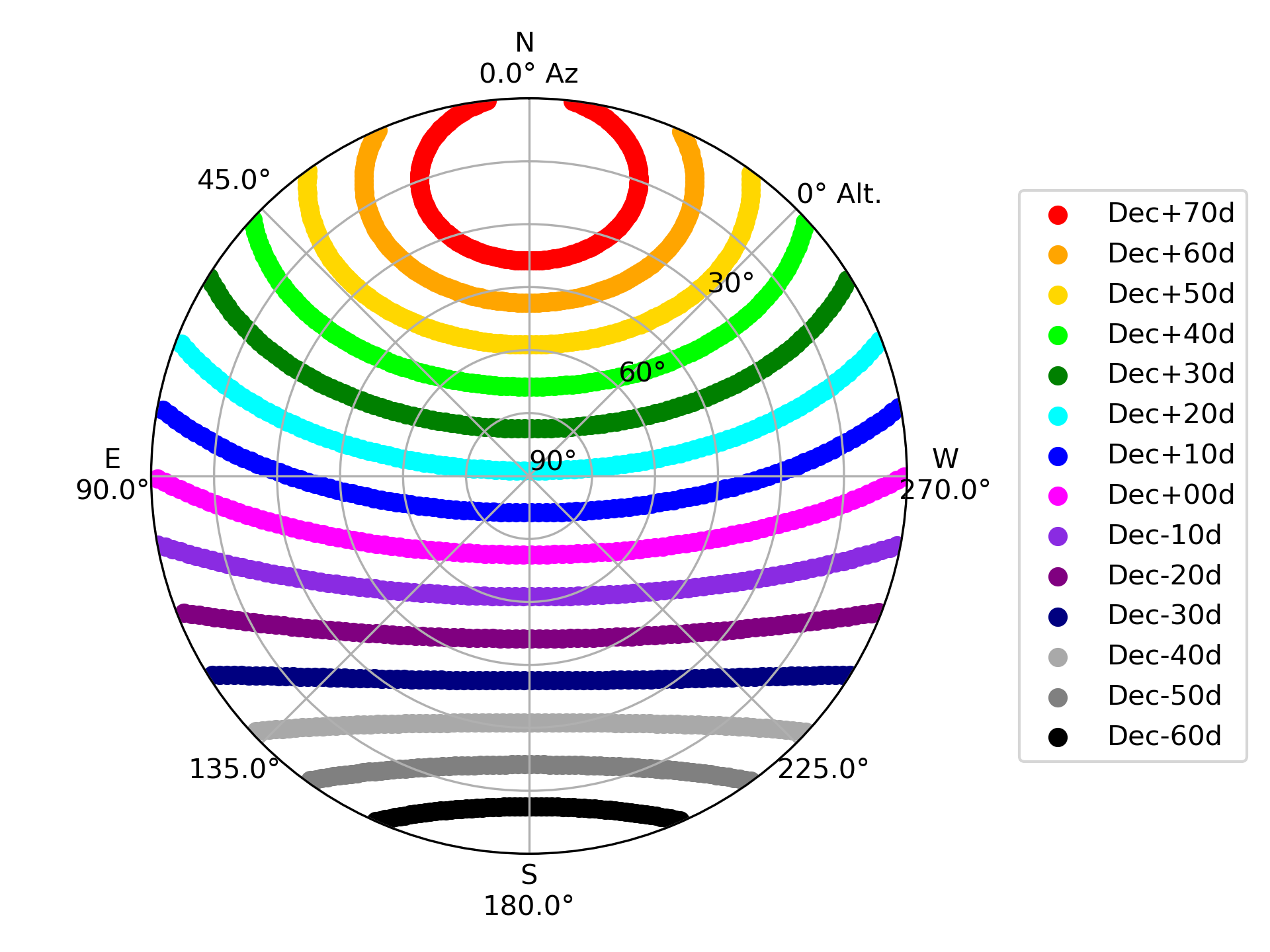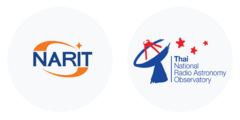
Photo 1-1: (Left) Chiang Mai, (Middle) Sketch of the TNRO site in Huai Hong Khrai Royal Development Study Centre, and (Right) the 40-m TNRT.
National Astronomical Research Institute of Thailand (NARIT, Public Organization) has established the Thai National Radio Astronomy Observatory (TNRO) in Huai Hong Khrai Royal Development Study Centre, Doi Saket District, Chiang Mai, in the northern part of Thailand 2018, which is 40 km away from NARIT headquarters in the North-East direction. This project was strongly motivated by the importance of the development by ourselves to achieve an empyreal goal of “Capacity building through radio astronomy and geodesy” via constructing national radio telescopes in Thailand. This construction has provided precious opportunities to develop engineering / technical / instrumental skills, its technology, unique sciences achieved with these telescopes, and essential experiences on the basis of collaboration with world-wide colleagues at the world-class facilities, as well as contribute to education via cultivating potential young astronomers, engineers, and geodesists. Given a radio quiet zone and low amount of water vapor on the basis of site investigations, the TNRO is the best suitable site to build up radio telescopes covering low to high frequencies. This site is constituted of the 40-m Thai National Radio Telescope (TNRT) and a 13-m VLBI Global Observing System (VGOS) radio telescope (TNRT co-location, in collaboration with Shanghai Astronomical Observatory (SHAO)), with a visitor center to be opened to general public (Jaroenjittichai 2018; Jaroenjittichai et al. 2017).
The 40-m TNRT (photo 1-1, right) is located at latitude 18d51'52" N and longitude 99d13'01" E at 403 m above mean sea level, corresponding to (X, Y, Z) = (−967131.24, +5960079.92, +2049286.67) meter. Based on this location close to the equator, the TNRT is geographically accessible to both the Northern and Southern hemisphere (see the bird's-eye view sky-coverage plot in figure 1-1). The TNRT is the largest telescope for radio astronomy and geodesy in South-East Asia. The TNRT was started to be built in 2018, based on the National Geographical Institute (IGN) 40-m Yebes telescope (e.g. Lopez Fernandez et al. 2006; de Vicente et al. 2006) with a classical Nasmyth-Cassegrain focus optics on AZ-EL mount, in collaboration with Yebes Observatory, IGN. This telescope drives in the range of AZ from −90 to +450 deg and EL from +3.5 to +90 deg with the slewing speed of 180 deg/min and 60 deg/min, respectively. However, the TNRT is an upgraded version with the installation of a Tetrapod Head Unit (THU) at the prime focus. This system enables the selection of either a receiver at the prime focus or the 3.28-m sub-reflector with a focal length of 15 m to be used for receivers installed at the Nasmyth focus in the receiver cabin. The Hexapod system as a part of the THU is utilized to achieve a calibration of gravity deflections under changing elevation angle, via allowing to position the sub-reflector automatically in 3 linear directions and 2 tilt axes. It permits tracking of the sub-reflector into an optimum position relative to the primary reflector focus. Given the manufacturing specifications at the best performance: a pointing accuracy of 2 arcsec (no wind case) and a main surface accuracy of 150 micrometer rms with 420 panels, we plan to install multiple receivers for the telescope covering the frequency range from 300 MHz up to 115 GHz, which contains P/L/C/X/Ku/K/Q/W-bands.
The receivers installed for commissioning and early sciences at the first phase in 2022 are the L-band (1.0-1.8 GHz, linear polarizations) and K-band (18.0-26.5 GHz, circular polarizations) receivers equipped with the Universal Software Backend (USB) system enabling multiple observation modes. These were developed in collaboration with Max Planck Institute for Radio Astronomy (MPIfR). In addition at this phase, the Ku-band receiver (10.70-12.75 GHz) used for microwave holography was developed in collaboration with Yebes Observatory, IGN (e.g. Lopez-Perez et al. 2014). The Telescope Control Software (TCS) is based on the ALMA Common Software and was also developed in collaboration with Yebes Observatory, IGN. The L-/Ku-bands and K-band receivers have been installed at the prime and a Nasmyth focuses, respectively.
| Diameter | 40 m | |
| Focal position & focal (f/D) ratio | Primary: 0.375 | |
| Optics |
Primary / Nasmyth |
|
| Mount | Alt-Az | |
| Driving range | Az | El |
| [−90, +450] deg | [+3.5, +90] deg | |
| Slewing speed | Az | El |
| 180 deg/min | 60 deg/min | |
| (latitude, longitude) | (18d51'52" N, 99d13'01" E) at 403 m above mean sea level | |
| (X, Y, Z) coordinates | (−967131.24, +5960079.92, +2049286.67) m | |
| Installed receiver | Primary focus | Nasmyth focus |
| (L, Ku) band | K-band | |
| Frequency coverage & Polarization |
|
|
| Future installation receiver | (P, C/X/Ku, Q/W) band | |
| Total frequency coverage | 0.3 - 115 (GHz) | |
| The number of panels for the primary mirror | 420 | |
| Main surface accuracy (manufacture specification) | 150 µm | |
| Pointing accuracy (manufacture specification) | 2 arcsec (no wind case) | |

Figure 1-1: Bird's-eye view sky-coverage plot of the 40-m TNRT both for the Northern and Southern hemisphere for source declination angles from +70 to -60 deg by every 10 deg steps.
The first light of an HI line, pulsar, and maser emissions was achieved with the L-band receiver in 2022, respectively, which were publicized via NARIT facebook below:
Key science cases achievable with the 40-m TNRT for a wide-variety of research fields and the wide-coverage of observable frequencies: pulsar, fast radio burst, gravitational wave, star formation, galaxy, active galactic nucleus (AGN), evolved star, chemically peculiar star, maser, and geodesy, were published as a white paper in arXiv website on 12 October 2022 below:
White paper: Jaroenjittichai, P., Sugiyama, K., Kramer, B. H., Soonthornthum, B., et al., "Sciences with Thai National Radio Telescope", 2022, arXiv:2210.04926.
Future Vision of the TNRO Project, as shown in figure 1-2.
For upgrading the 40-m TNRT, we are on-going developing
- C/X/Ku-bands receiver (4.5-13.6 GHz), in collaboration with CETC16
- Q/W-bands receiver (35-50 and 75-115 GHz), in collaboration with Korea Astronomy and Space Science Institute (KASI)
- Phased Array Feed for 0.7-2.1 GHz, in the design study phase
On the other hand, in addition to facilitating a 13-m VGOS station in TNRO site in collaboration with SHAO that will be launched in 2024, we are in on-going planning to build another VGOS station in Songkhla, the southern part of Thailand, at a distance of 1,330 km from Chiang Mai, allowing extensive applications in geodesy and tectonic studies covering the two different Eurasian and Sunda plates in South-East Asia. A receiver installed at the Songkhla VGOS has been developed in collaboration with Yebes Observatory, IGN. Futhermore, there are other possible candidate antennas available for radio astronomy in Thailand: telecommunication antennas with the diameter of 32-m at the campus of CAT Telecom Public Company Limited in Chonburi and Ubon Ratchathani, the central and eastern part of Thailand. These antennas will potentially be converted into radio telescopes with a similar technique used for the Yamaguchi 32-m, Hitachi and Takahagi 32-m, Warkworth 30-m radio telescopes, and so on.
Completing these plans will result in the establishment of a National Very-Long-Baseline-Interferometry (VLBI) Array in Thailand (TVA: Thai National VLBI Array), aiming to be launched since 2026 in C/X/Ku-bands and possibly in K-band. This TVA will be the solid foundation for establishing a forthcoming regional VLBI network in South-East Asia: South-East Asian VLBI Network (SEAVN), in collaboration with Institut Teknologi Bandung (ITB) in Indonesia, Universiti Malaya (UM) in Malaysia, and Vietnam National Space Center in Vietnam.

Figure 1-2: Future vision of the TNRO project.

